Idea by
Neal Lucas Hitch
i/thee
Call for ideas 2019
Post-Architecture
Post-Architecture
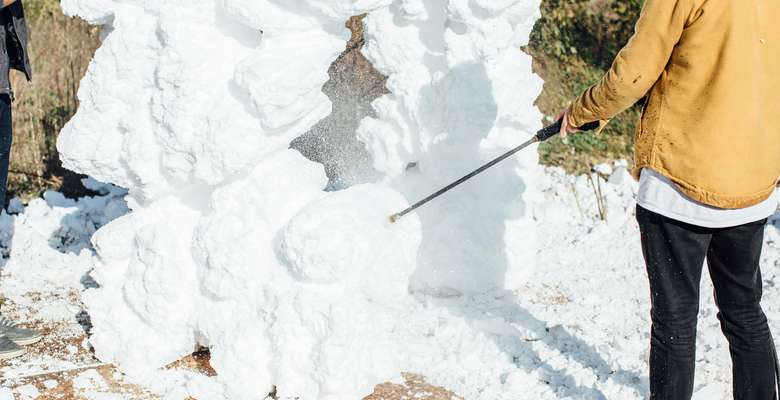
- Systemic changes
Today, much of mainstream architecture practice and theory prioritizes pragmatism above all other considerations, delegating design to a hierarchical structure that identifies functionality/safety as dominant, and leaves creativity/experience as a last concern. Our idea attempts to flip this hierarchy on its head. We propose to start a project with no preconceived notion of how the structure will function—even if it will function as architecture at all—and instead we leave all utility to be adapted afterward. Trees and caves were never specifically designed or meant to be dwellings; nevertheless, these natural structures became the primal typologies that humans adapted into homes. Our idea will investigate the design and construction of architecture in a similar manner to these natural structures: transient experiences not inherently architectural but that have the potential to be adapted to accommodate different programs and uses.
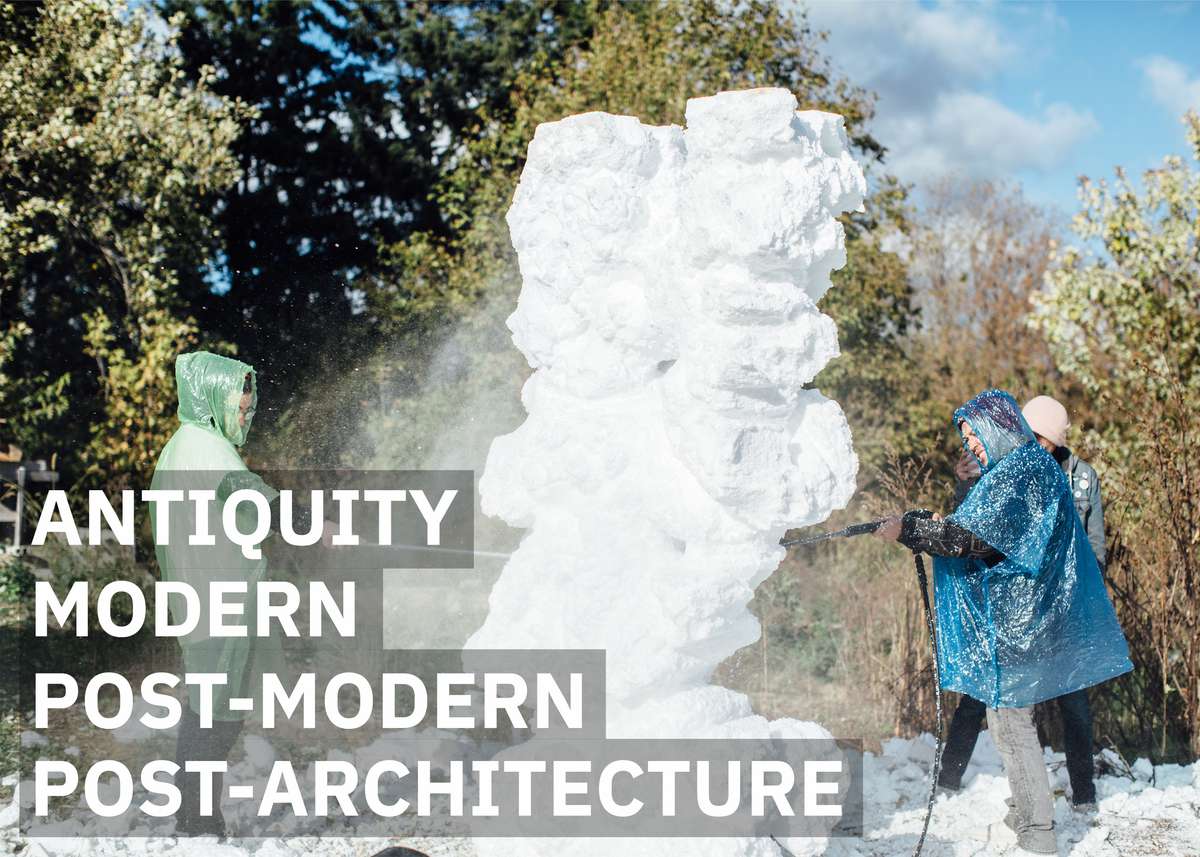
The first iteration of this concept implements the erosion of EPS blocks to create form, referencing patterns of natural design to create a new, supernatural architecture—not artificial or original, but something beyond. Through the process the foam is eroded using high pressure water sprayers to create caves. These caves are then adapted to accommodate various programs and uses. This way the structure does not just symbolize natural forces, it embodies them
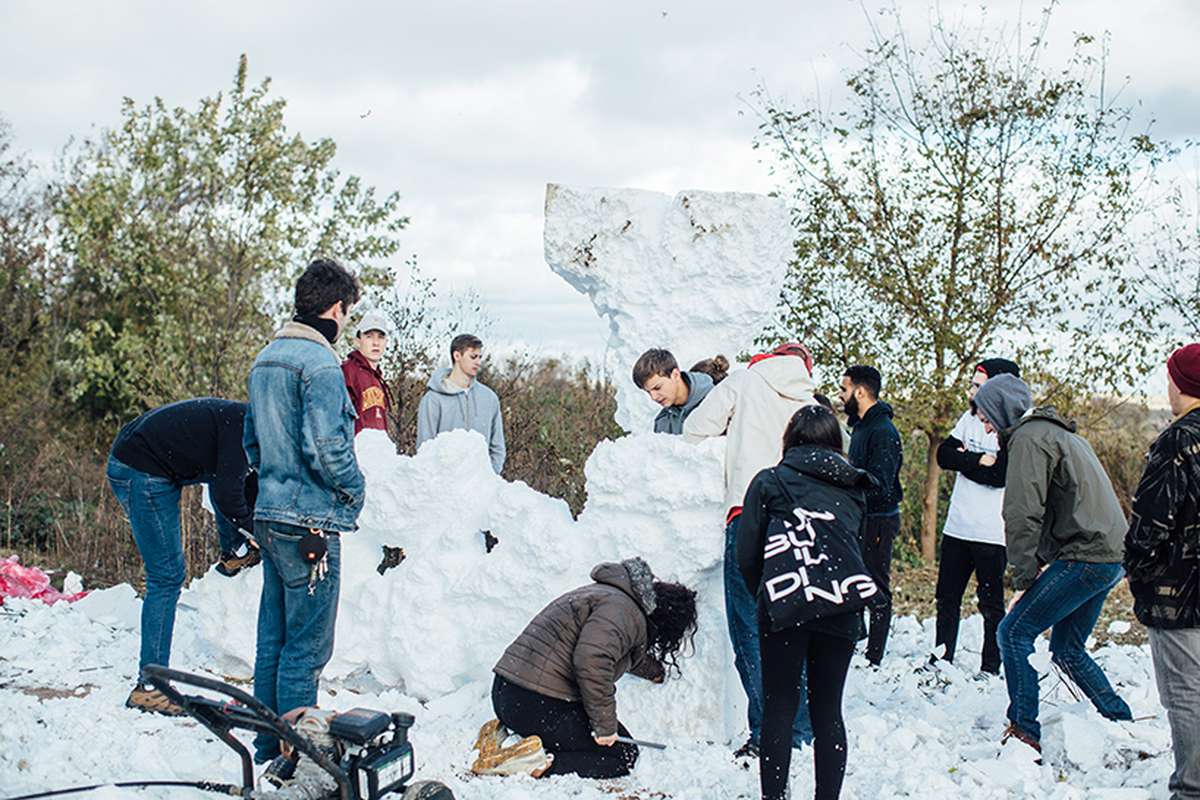
Furthermore, the granular yet permeable nature of the material creates an otherworldly scene when manipulated this way — a glowing, translucent, mountainous landscape for people to inhabit.

The process takes abstract design theory to its ultimate conclusion, not just questioning architectural conventions, but questioning the entire convention of architecture itself. Throughout the 1960s, artist Ad Reinhardt created a series of completely black paintings which he supposedly declared “the last” paintings anyone could ever paint. In the same way, our design aims to push architecture so deep into abstraction that it metamorphoses into something else entirely — into nature.

In this sense we are not designing buildings. We are designing forms that may be adapted into buildings—the same way humanities early ancestors adapted caves into their homes.
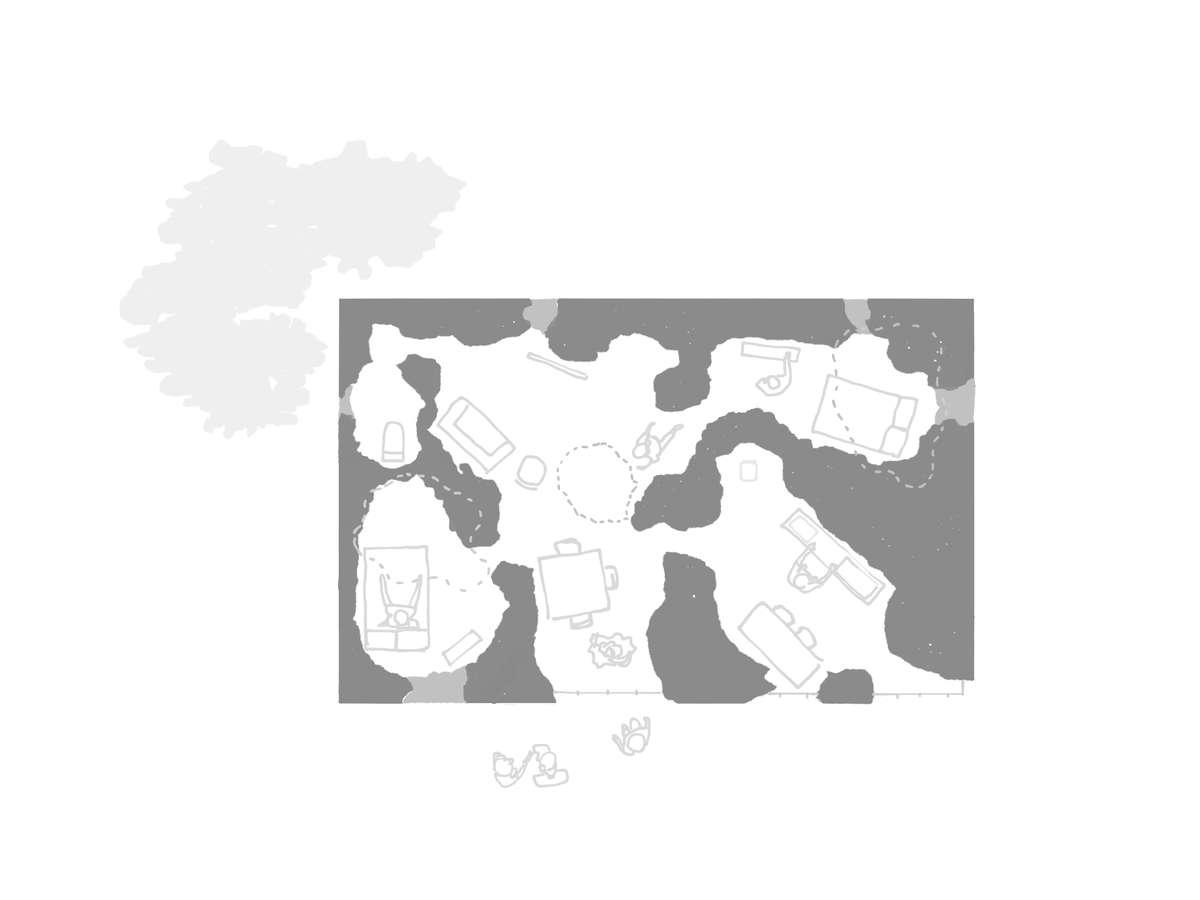
This begs the question: what does it meant to design a cave? Or a tree even? Is it possible to forget all preconceived ideas of what architecture has to be, Including whether it can even be classified as architecture? With our idea, we aim to continue a history of abstraction as a means to question the status quo: Post-modern; Post-structure; Post-architecture.
Post-Architecture
Post-Architecture

- Systemic changes
Today, much of mainstream architecture practice and theory prioritizes pragmatism above all other considerations, delegating design to a hierarchical structure that identifies functionality/safety as dominant, and leaves creativity/experience as a last concern. Our idea attempts to flip this hierarchy on its head. We propose to start a project with no preconceived notion of how the structure will function—even if it will function as architecture at all—and instead we leave all utility to be adapted afterward. Trees and caves were never specifically designed or meant to be dwellings; nevertheless, these natural structures became the primal typologies that humans adapted into homes. Our idea will investigate the design and construction of architecture in a similar manner to these natural structures: transient experiences not inherently architectural but that have the potential to be adapted to accommodate different programs and uses.
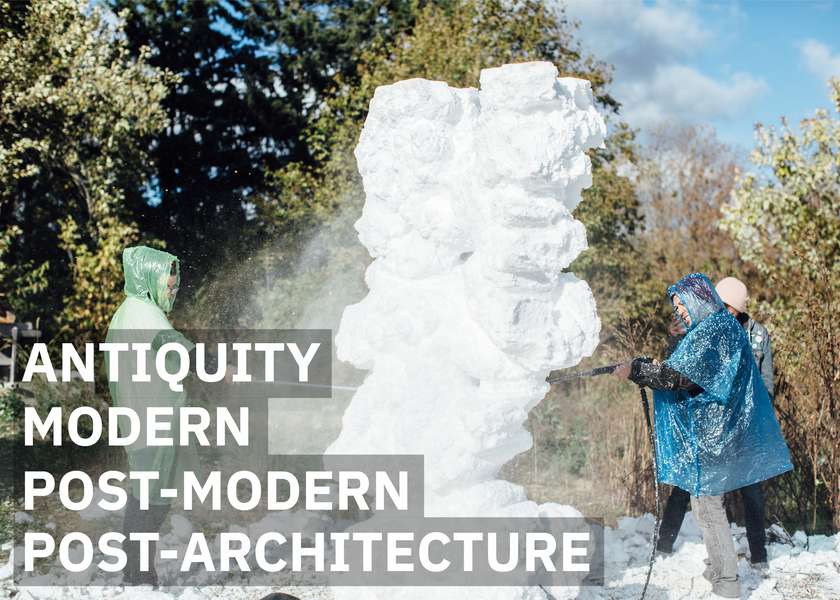
The first iteration of this concept implements the erosion of EPS blocks to create form, referencing patterns of natural design to create a new, supernatural architecture—not artificial or original, but something beyond. Through the process the foam is eroded using high pressure water sprayers to create caves. These caves are then adapted to accommodate various programs and uses. This way the structure does not just symbolize natural forces, it embodies them
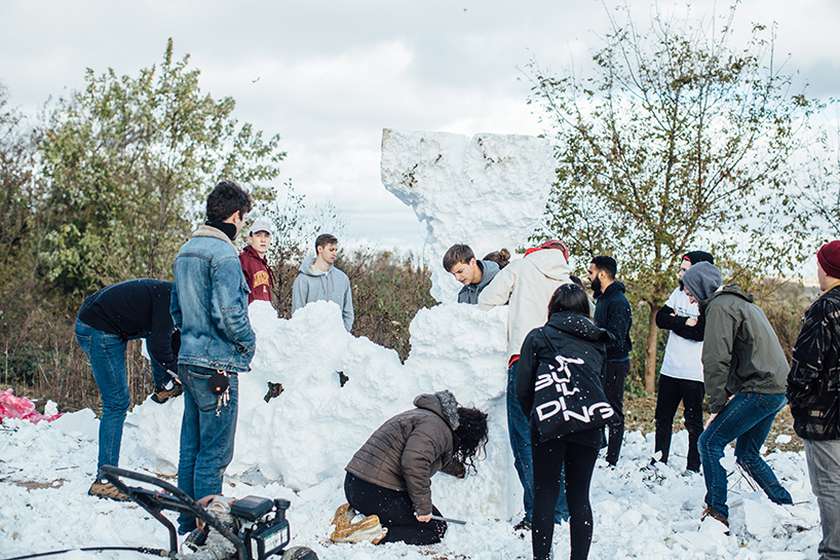
Furthermore, the granular yet permeable nature of the material creates an otherworldly scene when manipulated this way — a glowing, translucent, mountainous landscape for people to inhabit.
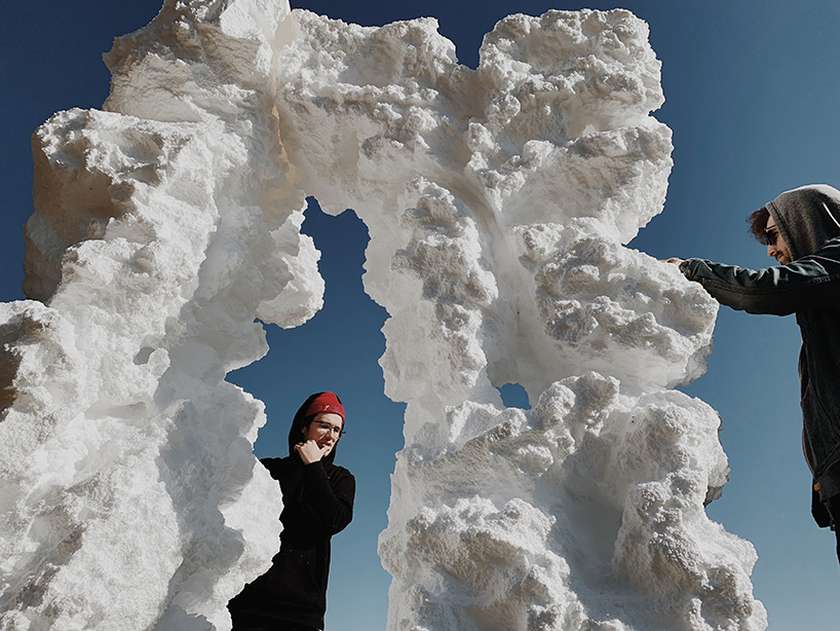
The process takes abstract design theory to its ultimate conclusion, not just questioning architectural conventions, but questioning the entire convention of architecture itself. Throughout the 1960s, artist Ad Reinhardt created a series of completely black paintings which he supposedly declared “the last” paintings anyone could ever paint. In the same way, our design aims to push architecture so deep into abstraction that it metamorphoses into something else entirely — into nature.
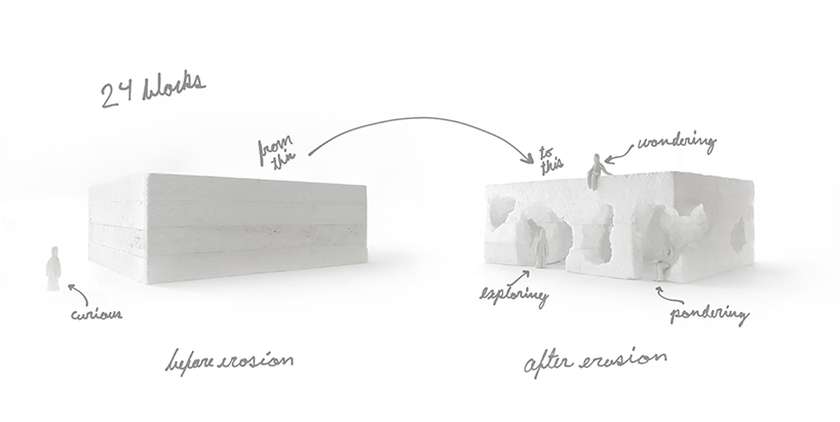
In this sense we are not designing buildings. We are designing forms that may be adapted into buildings—the same way humanities early ancestors adapted caves into their homes.
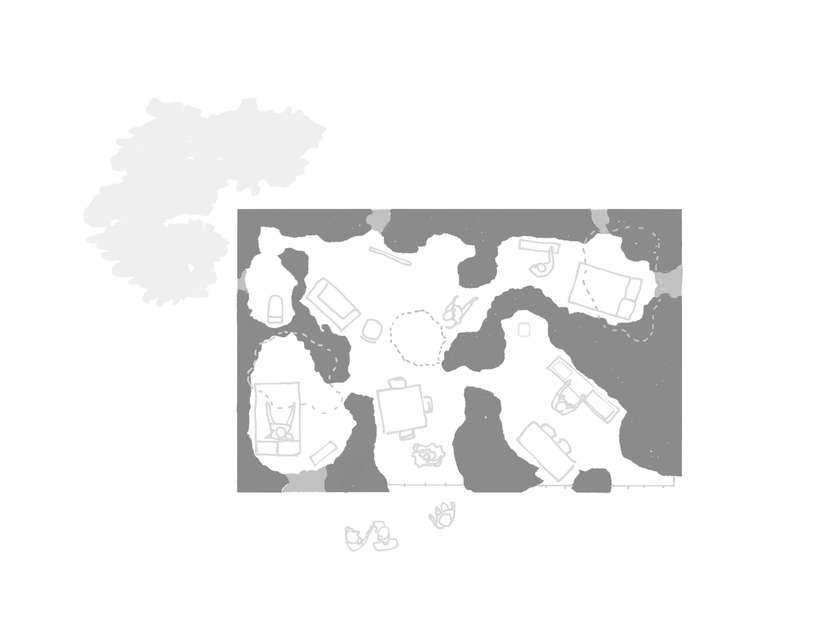
This begs the question: what does it meant to design a cave? Or a tree even? Is it possible to forget all preconceived ideas of what architecture has to be, Including whether it can even be classified as architecture? With our idea, we aim to continue a history of abstraction as a means to question the status quo: Post-modern; Post-structure; Post-architecture.